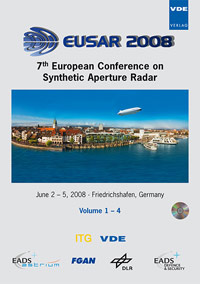Modelling and Analysing InSAR Phase Profiles at Building Locations in Multi-Aspect and Multi-Resolution Data
Konferenz: EUSAR 2008 - 7th European Conference on Synthetic Aperture Radar
02.06.2008 - 05.06.2008 in Friedrichshafen, Germany
Tagungsband: EUSAR 2008
Seiten: 4Sprache: EnglischTyp: PDF
Persönliche VDE-Mitglieder erhalten auf diesen Artikel 10% Rabatt
Autoren:
Thiele, Antje; Thoennessen, Ulrich; Cadario, Erich; Schulz, Karsten (FGAN-FOM Research Institute for Optronics and Pattern Recognition, Germany)
Soergel, Uwe (Institute of Photogrammetry and GeoInformation, Leibniz Universität Hannover, Germany)
Inhalt:
The improved ground resolution of state-of-the-art synthetic aperture radar (SAR) sensors suggests utilizing SAR data for the analysis of urban areas. Even in the case of multi-aspect InSAR, for building recognition usually the analysis is triggered mainly from features detected in the magnitude images and the benefit of fusing different views. However, considering InSAR data significant phase profiles in range direction at building locations are observable, caused by information mixture of the building and its surrounding area. Hence, it is worthwhile to make efforts to understand such phase variations to improve the building recognition, especially in the case of multi-aspect, multi-sensor and multi-temporal data. In this paper three InSAR data sets of the airborne sensors AeS-1 and STAR-3i (Intermap Technologies) with a slant range resolution of 38 cm respectively 1 m are investigated. Two of them are used to reconstruct initial building hypotheses based on our previous approach. Given these 3D models, the simulation of phase profiles at the building location is realized considering the specific sensor and illumination parameters of the data sets. According to the multi-aspect and multi-resolution configurations, changes in the phase distribution are observable. Subsequently, an assessment between the real and simulated phases is done and the potentials of considering these effects in the building recognition process are discussed.


